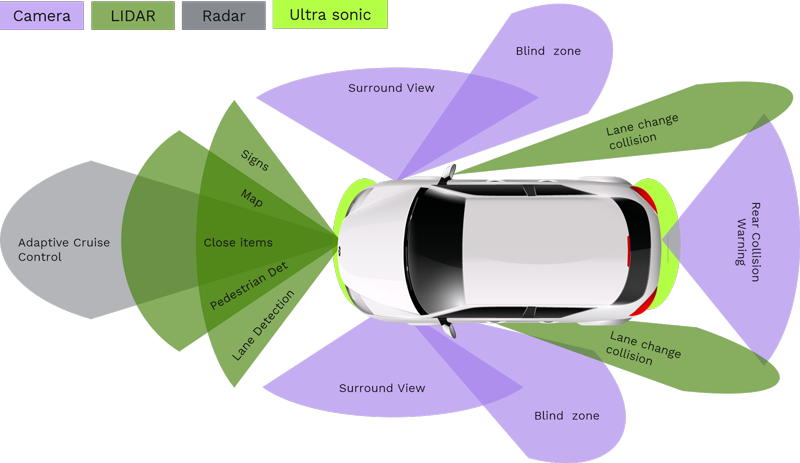
“Automotive Software is the backbone of modern vehicles” is far from an exaggeration. The rapid evolution of ADAS and self-driving vehicles is steering in a new era of software-defined vehicles.
In this highly competitive automotive landscape, the pursuit of cutting-edge trends, such as highly automated driving and full automation, is pushing the boundaries of current engineering capabilities.
The rapid evolution of ADAS and self-driving vehicles is steering in a new era of software-defined vehicles.
Just five or six years ago, a new vehicle would typically be equipped with around 60 to 100 sensors. However, the automotive landscape has transformed significantly since then, with today’s vehicles showing a staggering 200 or more onboard sensors.
This evolution in sensor quantity and technology is closely aligned with the increasing intelligence and autonomy of vehicles. As automotive engineering propels forward, these sensors continue to advance in sophistication and will undoubtedly multiply as new features become commonplace.
Today’s vehicles showing a staggering 200 or more onboard sensors.
This surge in sensor capabilities has sparked innovation across all faces of vehicle design. It’s reshaping the vehicle’s E/E architecture, while intensifying the complexity of automotive software. The current 100 million lines of code found in vehicles are projected to expand to 300+ million lines by 2030.
To put this into perspective, consider that, fueled by data from all sensors, a single car can generate anywhere from 1.4 to 19 Terabytes of data per hour, translating to roughly 380 to 5,100 Terabytes annually.
This exponential surge in data generation underscores the urgent necessity for the industry to develop robust strategies to effectively manage and navigate the intricate landscape of this growing code complexity.
The current 100 million lines of code found in vehicles are projected to expand to 300+ million lines by 2030.
The future of automotive software is upon us, and it promises not only smarter and more autonomous vehicles but also a profound transformation in how we approach vehicle engineering and design.


EFOVuJWq
Your comment is awaiting moderation.